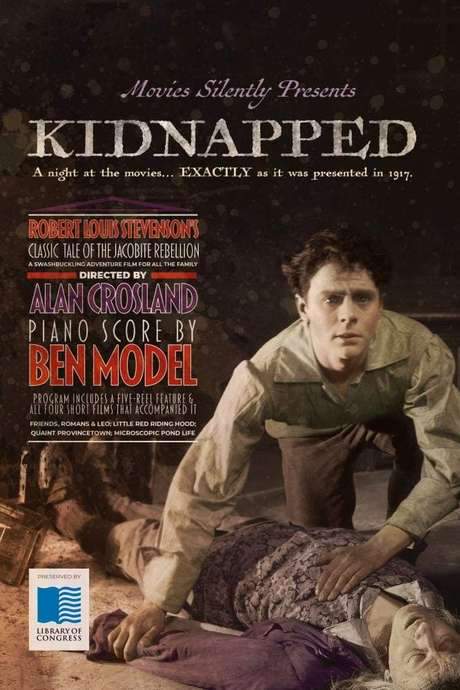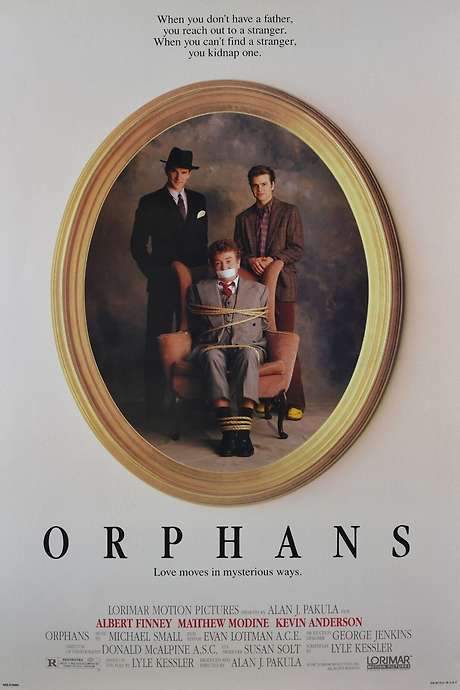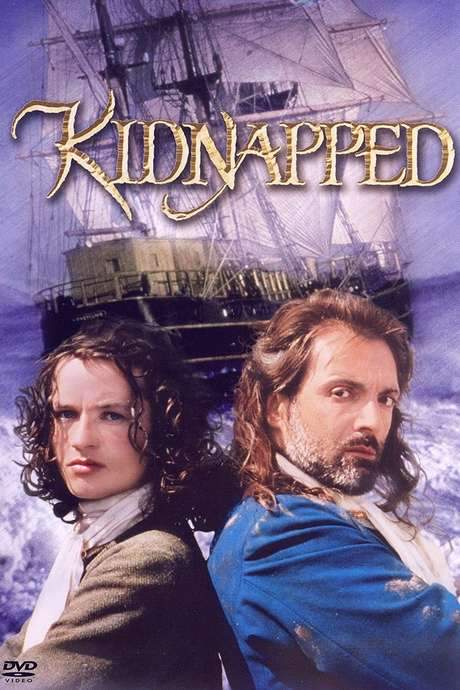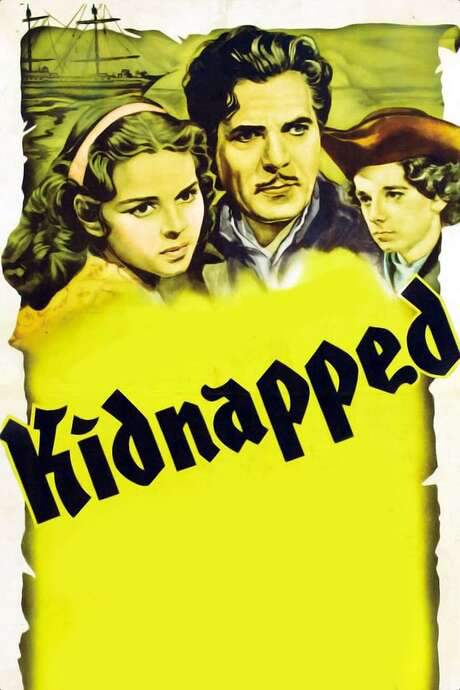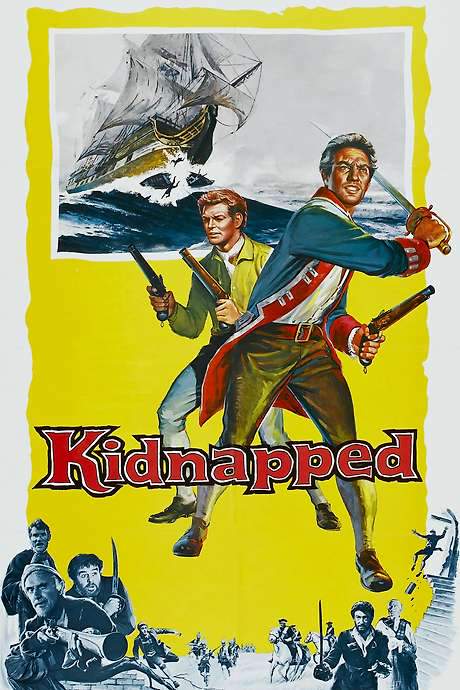
The Kidnappers
Year: 1953
Runtime: 93 mins
Language: English
Director: Philip Leacock
After losing their father in the Boer War, orphaned brothers Harry and Davy are sent from Scotland to live with their stern grandfather and gentle grandmother in Nova Scotia. The boys dream of a dog, but their grandfather refuses. When they discover an abandoned infant, they take the child in, only to suspect the baby may not be truly abandoned.
Warning: spoilers below!
Haven’t seen The Kidnappers yet? This summary contains major spoilers. Bookmark the page, watch the movie, and come back for the full breakdown. If you're ready, scroll on and relive the story!
The Kidnappers (1953) – Full Plot Summary & Ending Explained
Read the complete plot breakdown of The Kidnappers (1953), including all key story events, major twists, and the ending explained in detail. Discover what really happened—and what it all means.
In the early 1900s, two orphaned brothers, eight-year-old Harry Mackenzie Jon Whiteley and five-year-old Davy Mackenzie Vincent Winter, are sent to a rugged Scottish settlement in Nova Scotia, Canada to live with their stern grandfather Jim MacKenzie Duncan Macrae and his wife after their father’s death in the Boer War. The boys long for a dog, but Grandaddy is unyielding: “ye canna eat a dog.” This harsh rule colors their stay, forcing the brothers to improvise joy from scraps of affection and the small, secret world they build together. When they stumble upon an abandoned baby, fear of punishment drives them to hide the infant from the adults, and the child becomes a fragile substitute for the animal companionship they’ve been denied. Harry and Davy cautiously shelter the baby as if a fragile treasure, whispering to one another about the responsibility they’ve stumbled into and the risks of discovery.
As the settlement swells with Dutch settlers arriving after the Boer War, tensions simmer between Grandaddy and the Afrikaner landowner Jan Hooft Francis de Wolff, who lays claim to a hill that becomes a central point of conflict. Grandaddy’s stubborn pride clashes with legal reality, even as Kirsty Adrienne Corri—his daughter—navigates her own longings. She loves Dr. Willem Bloem Theodore Bikel, a Dutch-born doctor who came to Canada under a veil of personal mystery and whose affections don’t mirror hers, partly because he believes himself too old for her. The story threads these private yearnings through a larger struggle over land, authority, and the future of the settlement.
The plot takes a sharper turn when the found baby is revealed to be Jan Hooft Sr.’s younger daughter, transforming Harry’s accidental action into a charged question about guilt and loyalty. A local court is held in a trading store to determine Harry’s involvement or innocence, and the boy asserts that he did not know the baby’s identity. In a surprising turn, Jan Hooft speaks up on Harry’s behalf, arguing that no harm was done and that the older Hooft daughter should have assumed more responsibility, while also admitting that his own family’s pressure helped create the situation. The clerk suggests only an investigation into the whereabouts of the schools that could detain children in such cases, and Grandaddy, though stern, is momentarily tempered by Hooft’s defense, a glimmer of recognition of shared humanity amid conflict. The scene ends with Grandaddy privately acknowledging Hooft’s courage and influence.
As the dispute plays out, Grandaddy’s capacity for change becomes a quiet, hopeful thread. He has never learned to read or write, yet in a small, stubborn act he directs Harry to write to a mail-order company to order the red setter they have long desired. The dog becomes a symbol of reconciliation and a counterweight to the losses the family has endured. Earlier, Grandaddy had sacrificed a prized possession to fund the purchase—a detail the boys notice when they observe him walking without his boots, slung over his shoulder to save wear and tear, a reminder of the tough, resourceful life they’re navigating. The moment when the boys learn that the dog is within reach is both heart-wrenching and triumphant, folding in themes of sacrifice, perseverance, and the slow reshaping of a stern heart.
In the end, the family’s longings align with a practical, patient hope. Davy [Vincent Winter] voices a simple, enduring sentiment, “I think we’ll call him Rover, Harry,” signaling a new chapter anchored in shared responsibility and the small joys that family can salvage from hardship. The film closes on a note of tender curiosity about the future, with the boys naming their long-awaited companion and the Grandaddy’s quiet, ongoing efforts to bridge the gap between tradition and love.
- Notable moments include the chilling line spoken by Grandaddy in a moment of fear, and a later, stark reminder from the little boy about not harming the vulnerable. The story blends family devotion, land conflict, and adult secrets with the innocent, stubborn resilience of two brothers who learn what it means to belong to a place—and to each other.
Shall we call the baby Rover, Harry?
ye canna eat a dog
The journey is intimate without losing its wider historical texture, and the film invites viewers to consider how fear, duty, and affection can coexist in a single family, driving both conflict and a cautious hope for a gentler future.
Last Updated: October 09, 2025 at 10:50
Unlock the Full Story of The Kidnappers
Don't stop at just watching — explore The Kidnappers in full detail. From the complete plot summary and scene-by-scene timeline to character breakdowns, thematic analysis, and a deep dive into the ending — every page helps you truly understand what The Kidnappers is all about. Plus, discover what's next after the movie.
The Kidnappers Timeline
Track the full timeline of The Kidnappers with every major event arranged chronologically. Perfect for decoding non-linear storytelling, flashbacks, or parallel narratives with a clear scene-by-scene breakdown.

Similar Movies to The Kidnappers
Discover movies like The Kidnappers that share similar genres, themes, and storytelling elements. Whether you’re drawn to the atmosphere, character arcs, or plot structure, these curated recommendations will help you explore more films you’ll love.
Explore More About Movie The Kidnappers
The Kidnappers (1953) Scene-by-Scene Movie Timeline
The Kidnappers (1953) Movie Characters, Themes & Settings
The Kidnappers (1953) Spoiler-Free Summary & Key Flow
Movies Like The Kidnappers – Similar Titles You’ll Enjoy
The Child (2005) Full Movie Breakdown
The Little Kidnappers (1990) Film Overview & Timeline
Kidnapning (1982) Film Overview & Timeline
Kidnapped (1917) Detailed Story Recap
Orphans (1987) Movie Recap & Themes
The Kidnapping Day (1000) Plot Summary & Ending Explained
The Kid (1999) Ending Explained & Film Insights
Kidnapped (1995) Plot Summary & Ending Explained
Rent-a-Kid (1995) Ending Explained & Film Insights
Kidnapped (1938) Full Summary & Key Details
The Kid Brother (1927) Movie Recap & Themes
Kidnapped (1960) Complete Plot Breakdown
Kidnap (1000) Story Summary & Characters
Me and the Kid (1993) Full Summary & Key Details
The Kid (1921) Movie Recap & Themes






